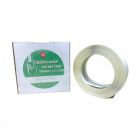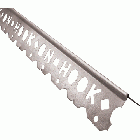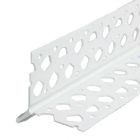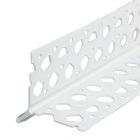Our website uses cookies and similar technologies to provide you with a better service while searching or placing an order and for analytical purposes.
By clicking the Allow Cookies button, you are informing OBAS UK Ltd that you agree to the use of these cookies as detailed in our
Privacy Policy.
What's the history of pargeting in England?
Pargeting is an interesting plastering skill. It’s something that’s been carried out in various places since the first plasterers to create ornamental plastering lived during the Roman era.
It seems that ornamental plastering skills were almost entirely lost during the Dark Ages until the Renaissance when a certain artist by the name of Raphael (not the teenage mutant ninja turtle), started digging around in the Golden Palace of Emperor Nero. One of Raphael’s pals, Giovanni decided to teach himself the ornamental plasterwork techniques and it wasn't long before the Medici would want stuccowork in their ceilings.
Around 100 years later, Henry VIII in England and François I of France had a bit of a competition to see who could build the best palace and they both got Italians in to do the plastering.
It wouldn't be long before people around England decided to get a plasterer to do their ceilings (and elsewhere) in lime plaster and it was at this point that the very English term, pargeting, came into the parlance.
After the Civil War and the Commonwealth times and tastes changed and must of the pargeting was taken down in remodelling, it later saw a growth in fashion again in the reign of Charles II and became relatively commonplace until the 1780's where the ‘machine made’ look became the fashion with Robert Adam popularising ceiling moulding decorations.
Briefly, pargeting became popular again during the Arts and Crafts period, however as modernity swept it has been in decline, that is until the last few years in which time it’s grown again with people adding decorative features around their homes.
It’s likely that pargeting will once again come into fashion (and probably in the near future!) and those plasterers who've been practising this skill, and who've been introducing it to their clients will be in a great demand. In our dealings with plasterers we've certainly seen an increase in the kind of plastering products and plastering tools you'd need to carry out pargeting work - so who knows!







